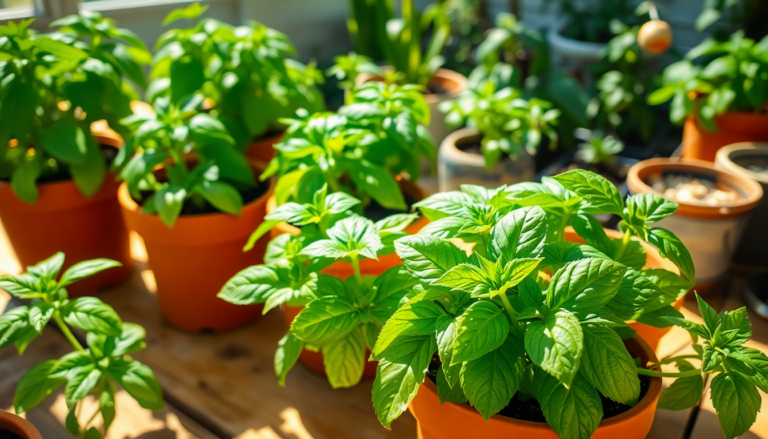Argomenti trattati
Why grow basil at home?
Growing culinary herbs like basil can significantly enhance your meals while allowing you to connect with nature. Basil, a staple in many cuisines, offers a burst of flavor that transforms ordinary dishes into extraordinary culinary experiences. Additionally, gardening can be a therapeutic activity, providing mental relaxation and a sense of accomplishment. With the right care, basil can thrive whether indoors on a sunny windowsill or outside in a vibrant garden bed.
Choosing the right environment for basil
Before you start planting, it’s essential to select the right environment for your basil. This herb thrives in warm temperatures and needs plenty of sunlight. Aim for a location that receives at least six to eight hours of direct sunlight daily. Indoors, a south-facing window is typically ideal. If natural light is limited, consider using grow lights to supplement the light requirements of your basil plants.
When selecting a container, ensure it has good drainage. Basil prefers potting soil that is rich in nutrients rather than standard garden soil, which may be too compact for healthy root development. A larger pot will also help retain moisture better than a smaller one, allowing the roots to spread comfortably.
Starting basil seeds indoors
If you’re starting from seeds, germination is a crucial step. For optimal results, invest in a seed-starting kit. This should include seed pods, basil seeds, and a covered container to maintain moisture. The ideal temperature for germination is around 70°F. If your home is cooler, consider using a heat mat to encourage sprouting.
Once your seeds have germinated and grown to about one-third of an inch, you can remove the cover and allow natural light to take over. This transition is vital for the plant to develop strong growth before it’s moved to its final location.
Transplanting basil outdoors
For those looking to grow basil outdoors, the best time to transplant is late spring or early summer, after the danger of frost has passed. Ensure that the soil temperature is consistently above 70°F to minimize stress on the plant. When planting, space your basil among other warm-weather vegetables like tomatoes or peppers to create a thriving garden ecosystem.
Regularly monitor the weather. If you anticipate cold nights or heavy rain, postpone your transplanting to protect your basil from adverse conditions.
Daily care for your basil plant
Once established, basil requires regular attention. This herb enjoys moist but well-drained soil. Overwatering can lead to root rot, so check the moisture level by inserting your finger about an inch into the soil. If it clings to your finger, hold off on watering. During hot spells, you may need to water every two to three days.
When growing basil indoors, ensure it receives adequate sunlight. If you notice your indoor basil stretching toward the light, it might be time to rotate your plant or reposition it closer to the window.
Fertilizing and pruning basil
To promote healthy growth, fertilize your basil with a liquid concentrate once a month during the growing season. Be cautious not to over-fertilize, as this can lead to excessive stem growth and smaller leaves. A balanced approach will ensure your plant remains bushy and productive.
Pruning basil is also essential. Regularly pinch off the top leaves to encourage outward growth rather than upward. This practice helps create a fuller plant and prevents flowering, which can halt leaf production.
Harvesting your basil
When it comes time to harvest, always pick the larger leaves from the bottom of the plant. This method allows the plant to focus on growing new leaves at the top. Avoid removing too many leaves at once to ensure continued growth. If you’ve grown your basil from seed, wait until the plant is at least two months old before you begin harvesting.
Should your basil start to flower, snip the buds off immediately to maintain leaf production. A healthy basil plant should resemble a bush rather than a tall stalk. Regular trimming encourages a flourishing herb that will enhance your culinary creations for months to come.
Common challenges and solutions
Basil can be sensitive to environmental changes. If your plant appears stagnant or shows signs of distress, allow it time to adjust to its conditions. Consistency in care is key during this period. Keep an eye out for pests like aphids or spider mites, particularly in indoor settings. If you notice any infestation, treat it promptly with insecticidal soap or neem oil.
With a little patience and care, you can enjoy a thriving basil plant that not only beautifies your space but also elevates your home-cooked meals to a new level of flavor.

